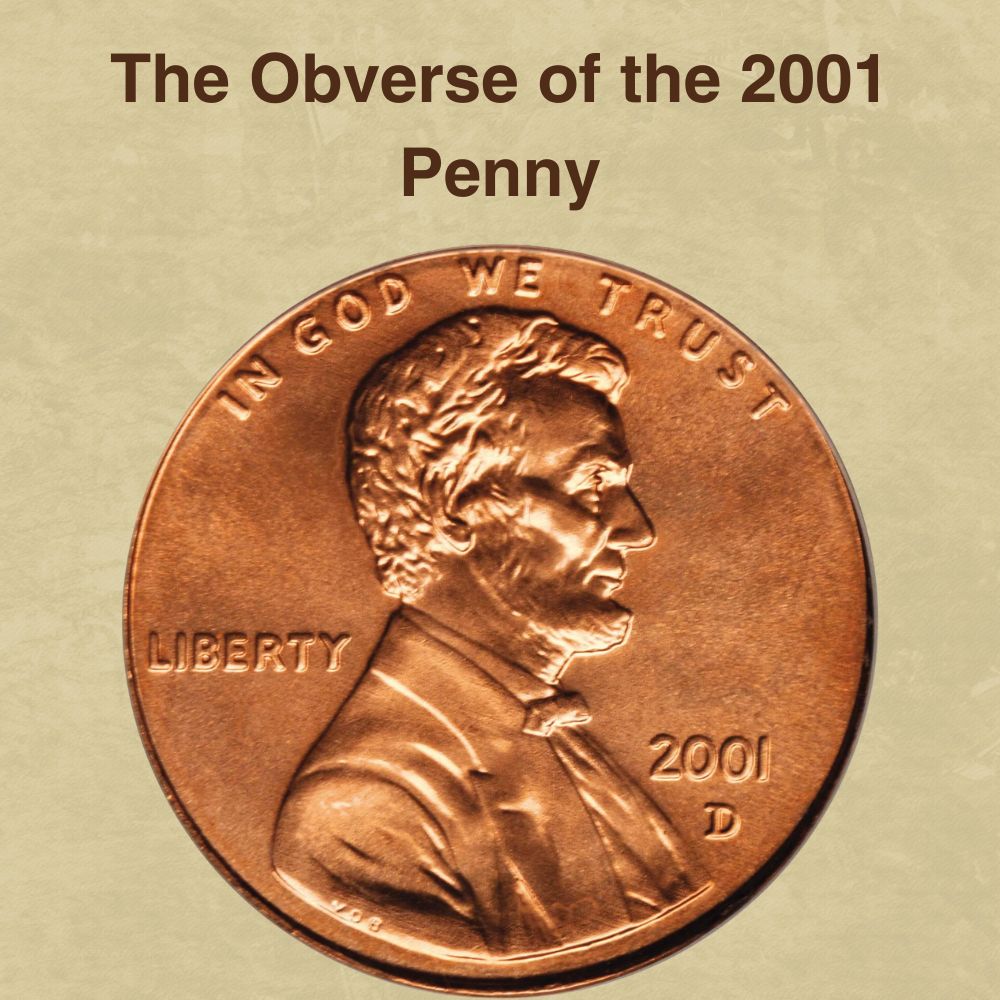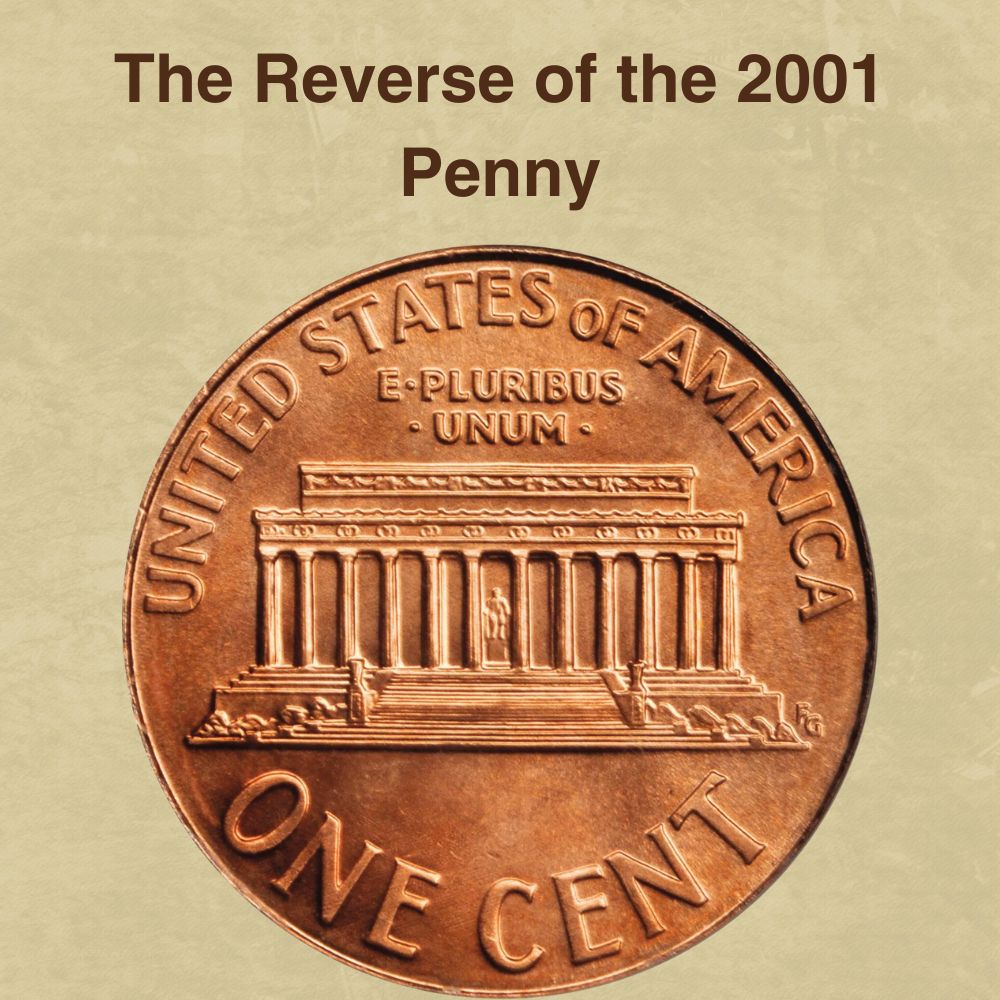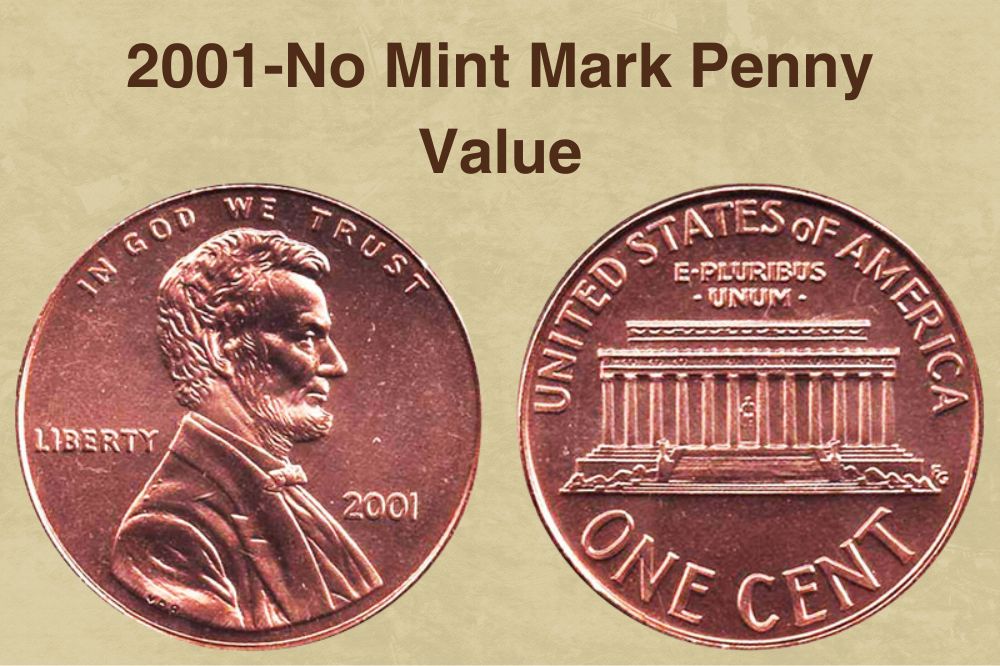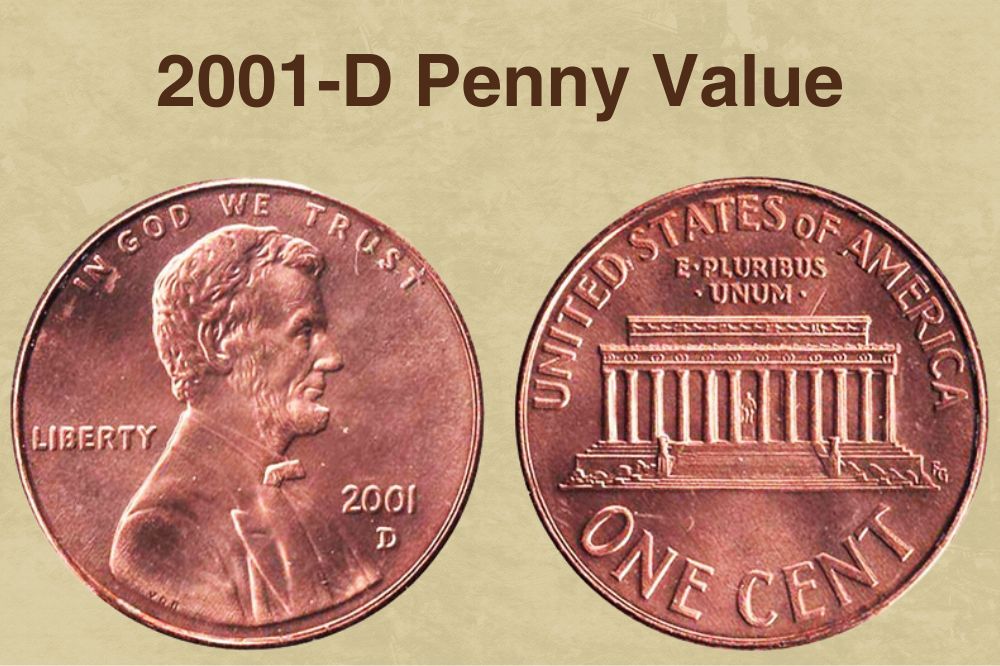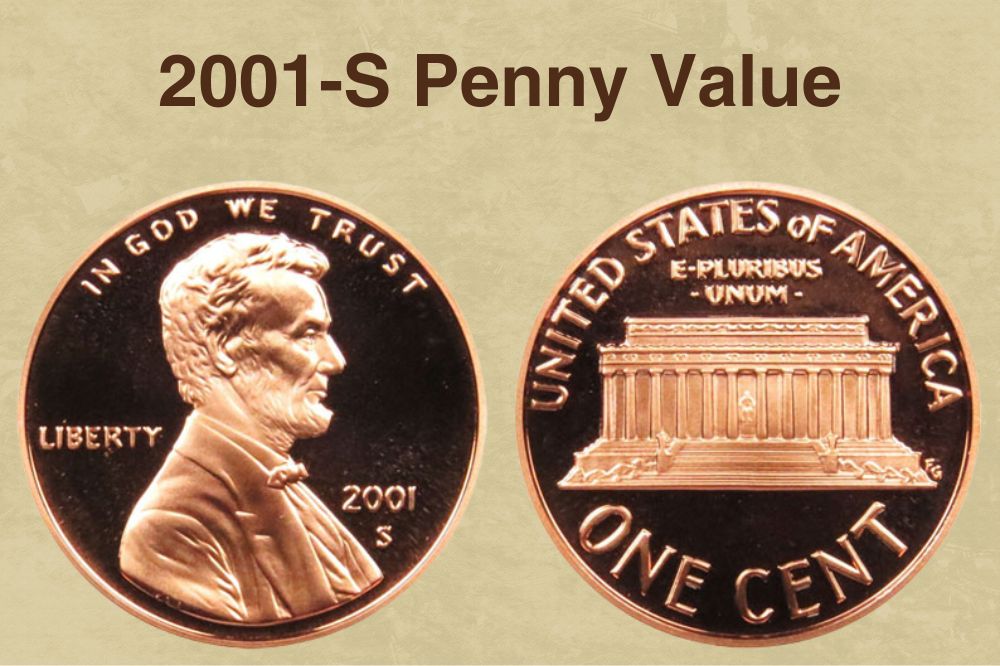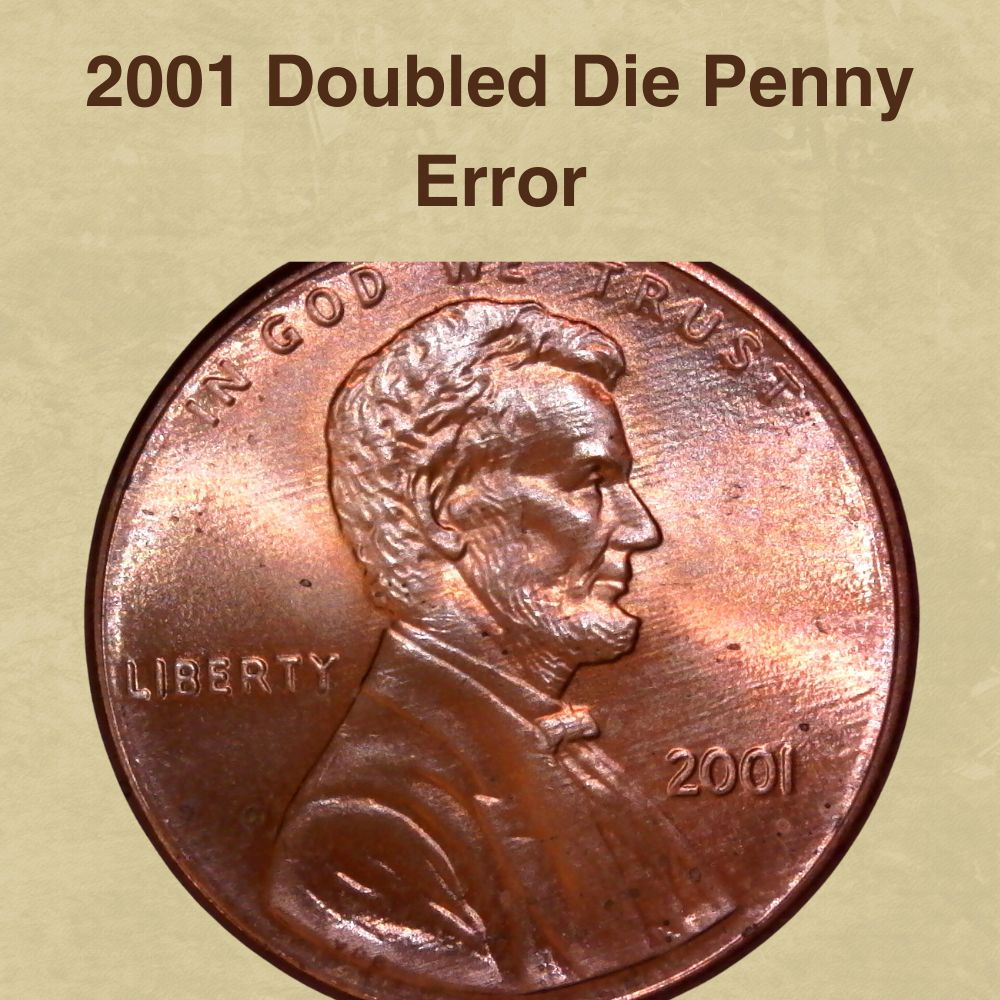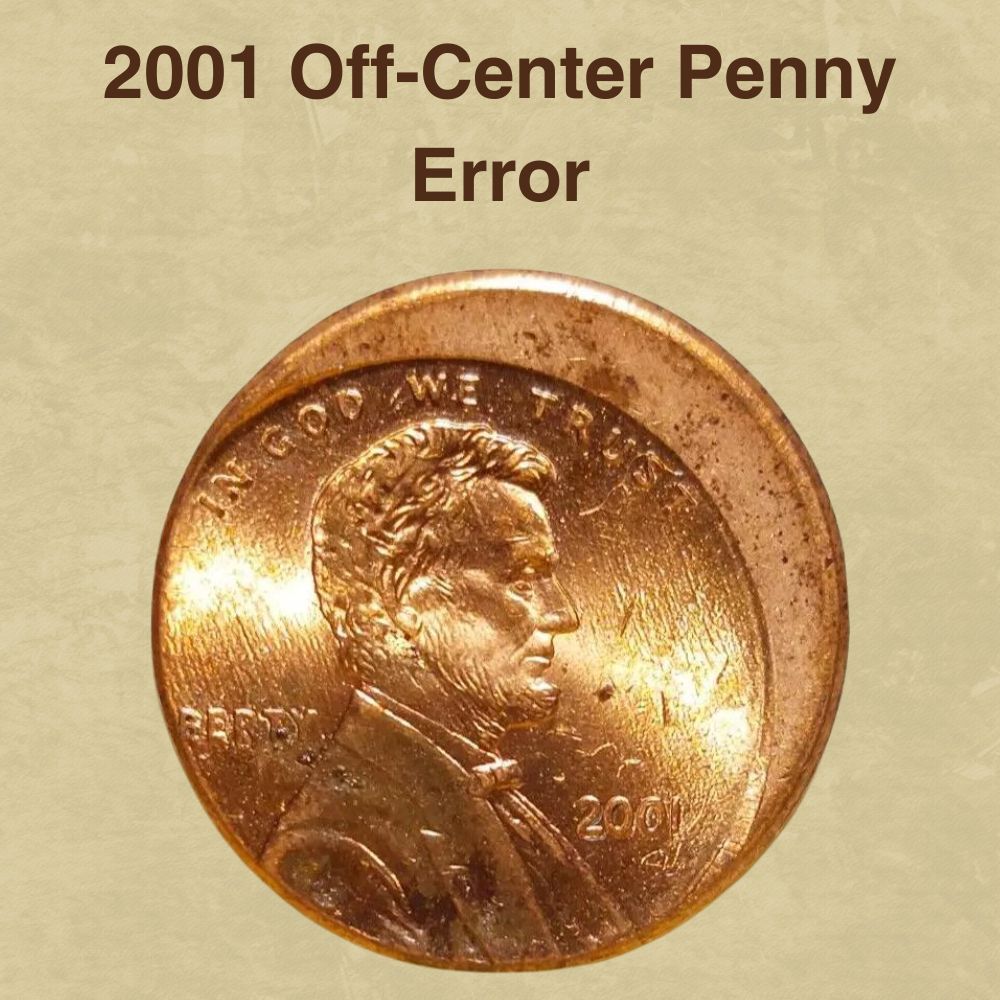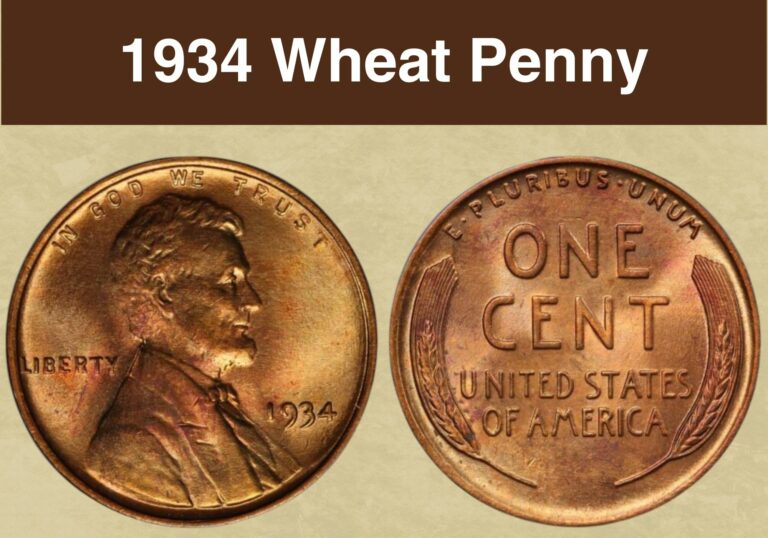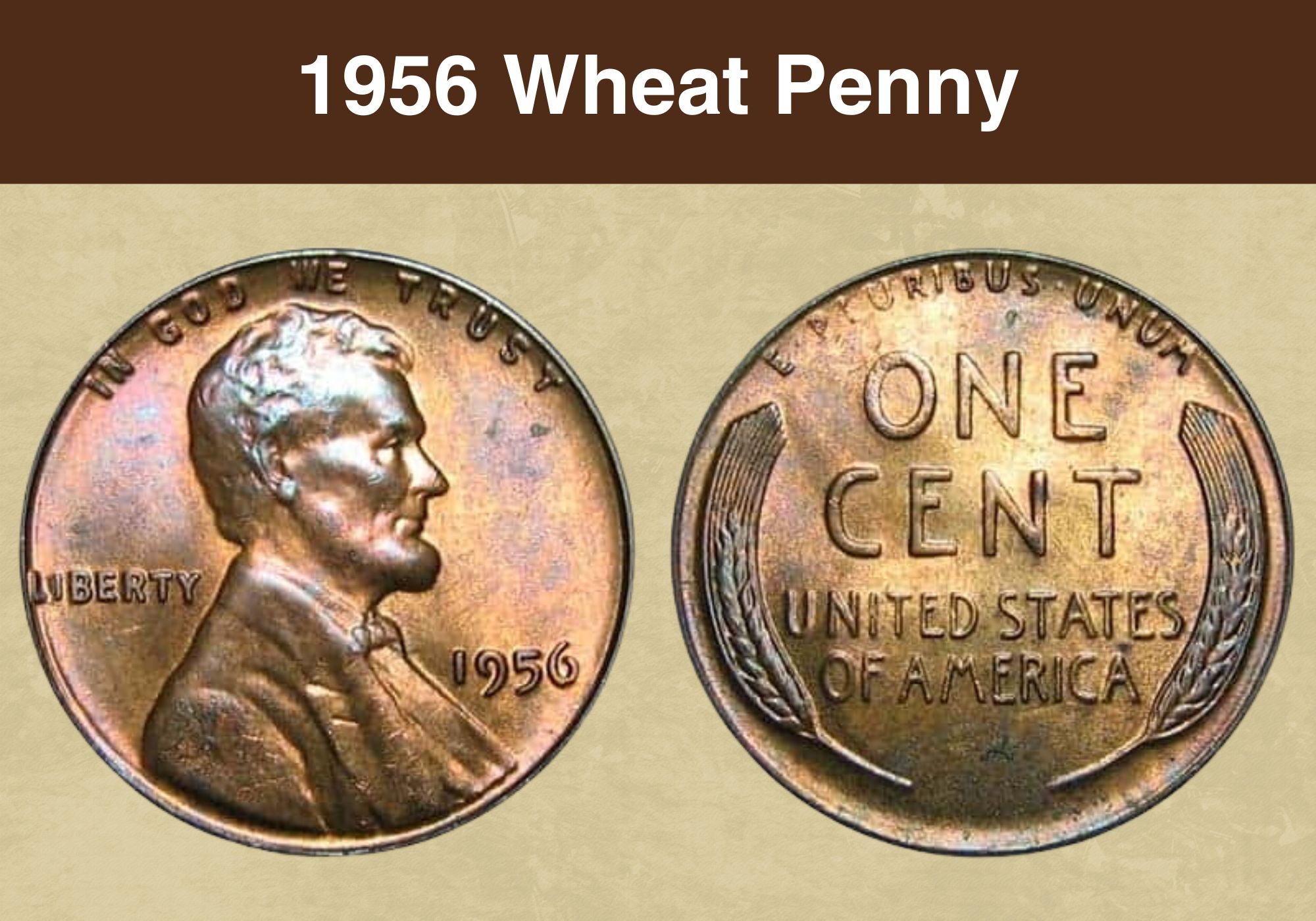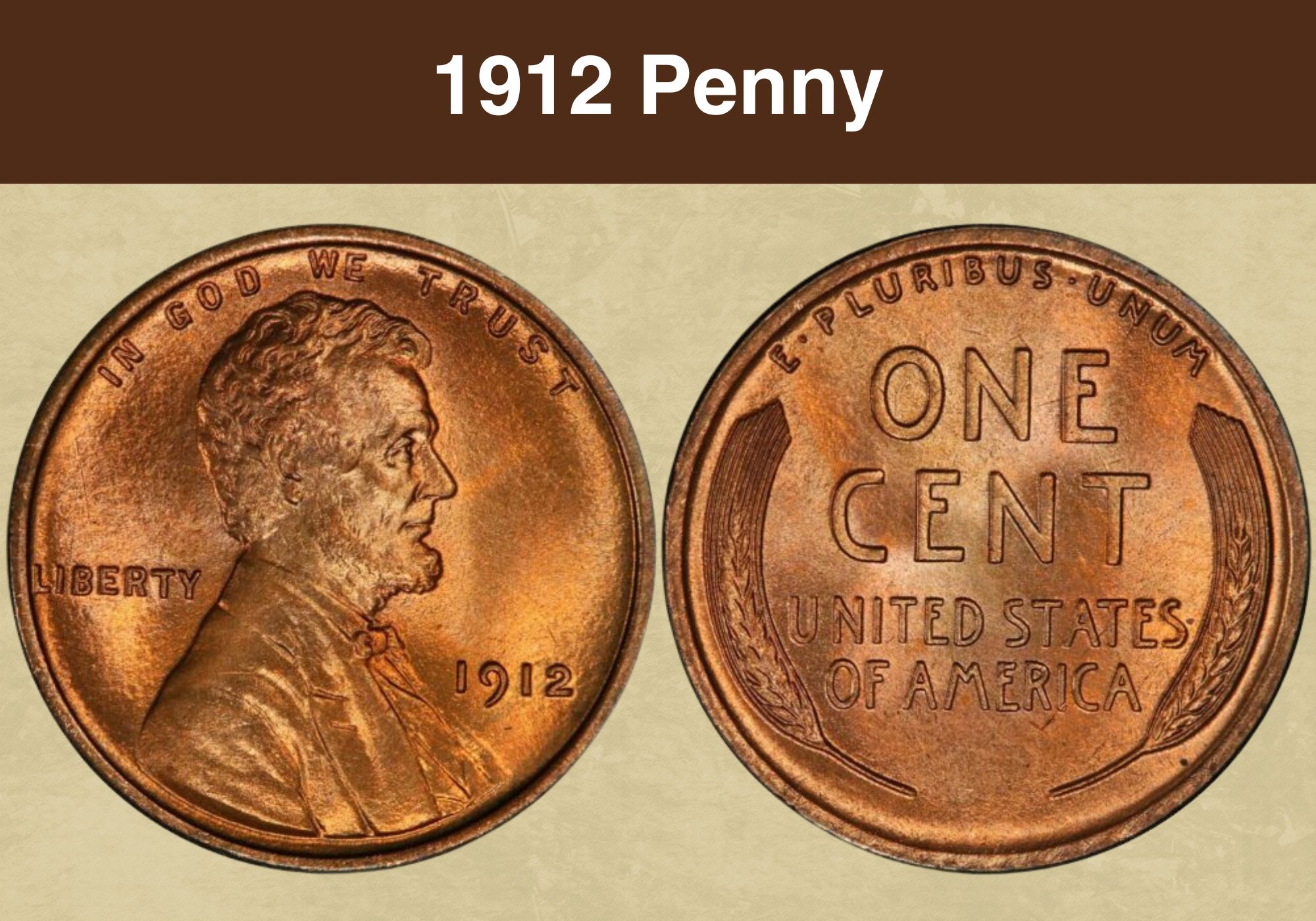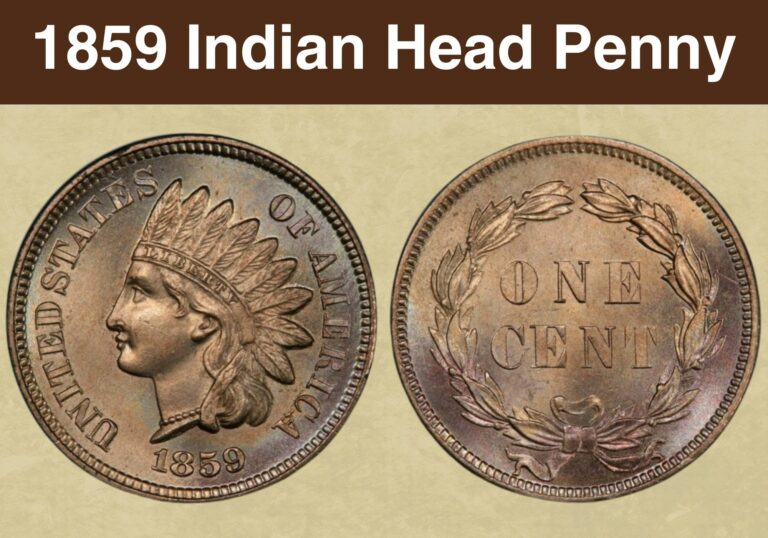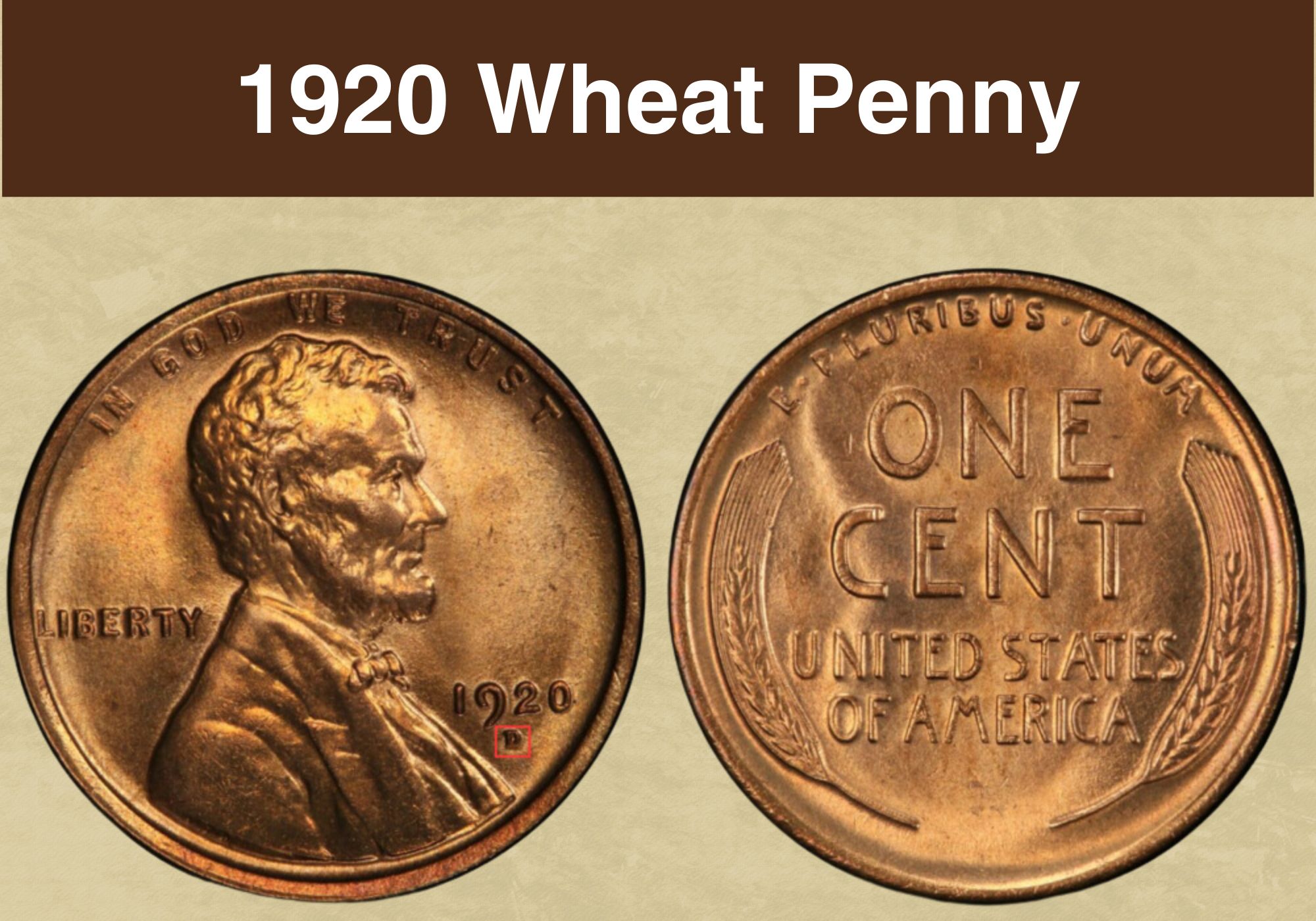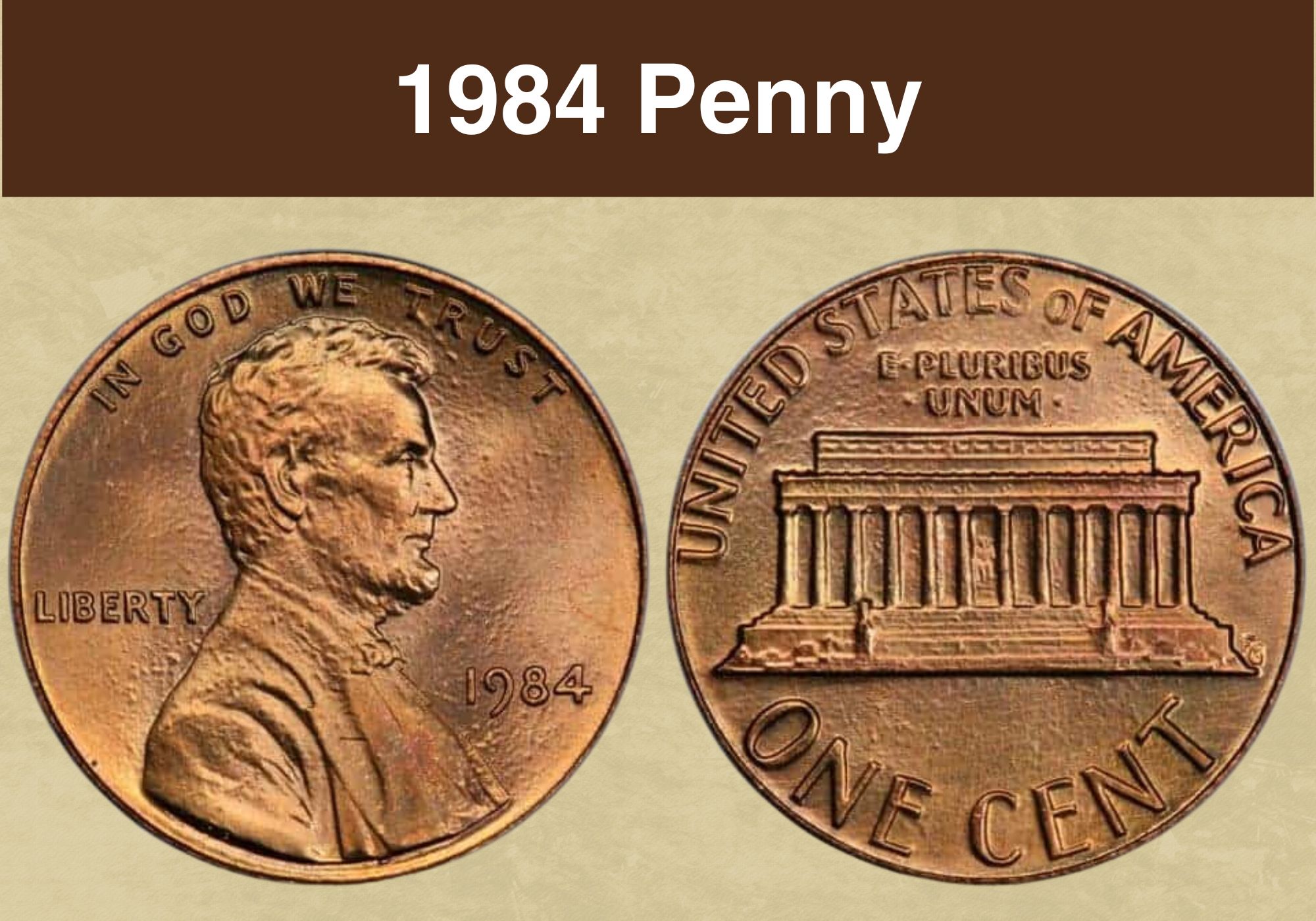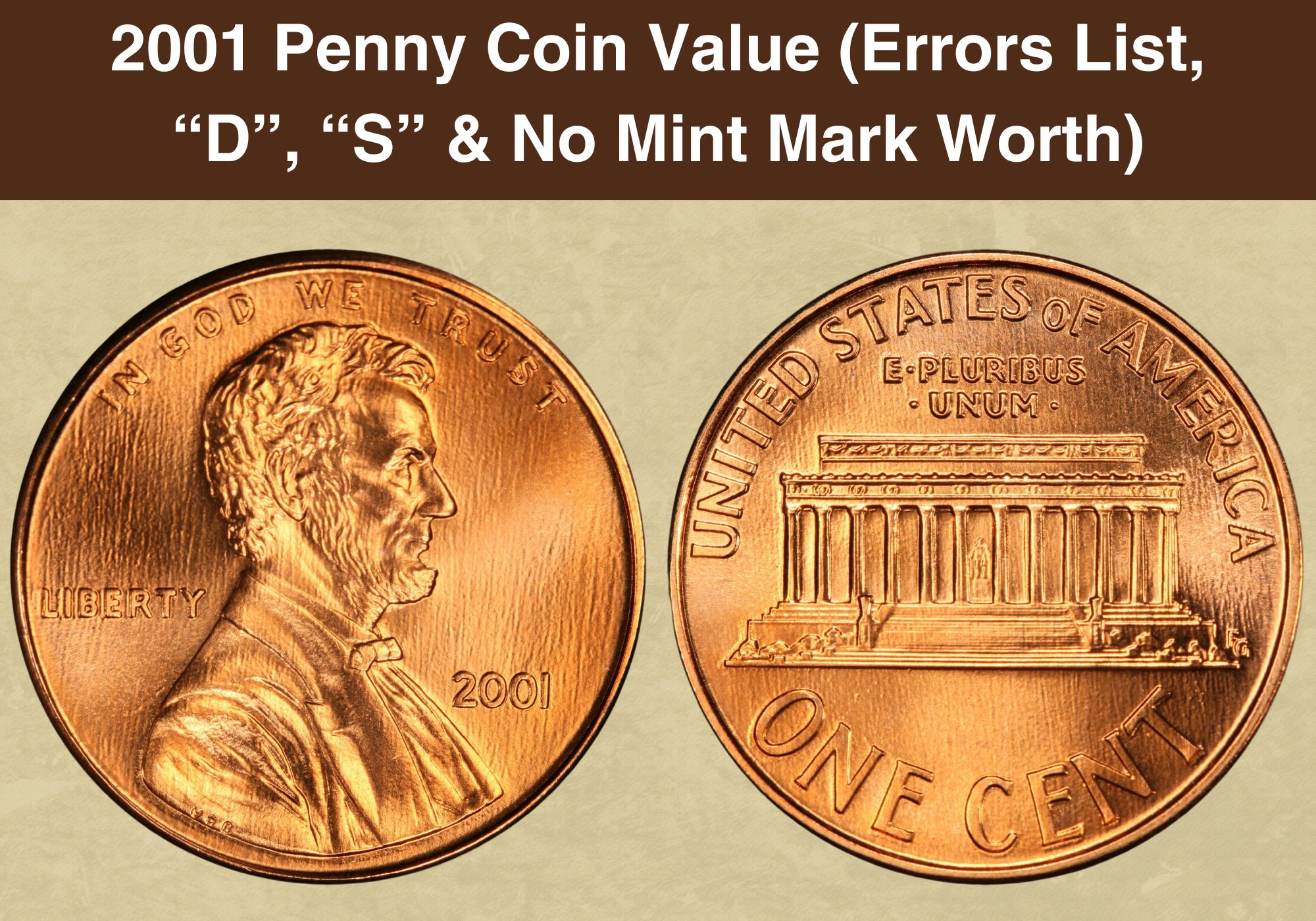
Coin Value Contents Table
Have you discovered a 2001 penny and wondered how much this old coin could be worth?
Or are you looking to add or offset a 2001 penny from your collection?
Knowing the 2001 penny value can help you make a smart decision, whether you are considering buying or selling your coin.
The truth is some 2001 pennies are worth good money, but these coins are rare. If you come across an uncirculated 2001 Lincoln penny, you should consider yourself lucky—such a coin can fetch hundreds or even thousands of dollars!
If all this sounds exciting, let’s jump in and find out: How much is a 2001 penny worth? Is it worth collecting?
2001 Penny Value Chart |
||||
| Mint Mark | Good | Fine | Extremely Fine | Uncirculated |
| 2001 No Mint Mark Penny Value | $0.30 | $0.30 | $0.50 | $10 |
| 2001-D Penny Value | $0.30 | $0.30 | $0.50 | $10 |
| 2001-S Proof Penny Value | – | – | – | $15 |
History of the 2001 Penny
Assassinated President Abraham Lincoln’s centennial birth anniversary was in February 1909. As a way to honor his fellow Republican and one of the country’s most celebrated leaders, President Theodore Roosevelt authorized the United States Mint to design a cent to commemorate the late president.
The Mint commissioned sculptor Victor David Brenner to design the new Lincoln coin, which became the first circulating coin of a U.S. president. The Lincoln penny, also known as the Lincoln cent, was released into circulation in August 1909.
The coin’s obverse design has remained unchanged over the years, making the Lincoln penny one of the longest-running coins in U.S. and world coinage history.
However, the reverse design has changed several times, from the original wheat ears to the Lincoln Memorial and the Union Shield.
The wheat ears design was replaced by Frank Gasparro’s Lincoln Memorial, which was replaced in 2009 by four different designs commemorating Lincoln’s bicentennial birth.
The most current design, initiated in 2010, features the Union Shield by Lyndall Bass.
The Lincoln penny is one of the most beloved coins due to its historical significance. But this coin is not without controversy, the most notable one being one brought about by Brenner’s initials.
When designing the new Lincoln cent, Brenner engraved his initials VDB at the bottom of the coin’s reverse. However, the public protested that the initials were too invasive and amounted to an advertisement on a public coin.
Following the uproar and only a few days after launching the Lincoln penny, the Mint stopped producing pennies with the large VDB initials. However, in 1918, the Mint reintroduced the initials, this time smaller, on the obverse next to Lincoln’s shoulder.
Another thing that has consistently changed is the metal composition of the Lincoln penny. Originally, these coins were made of 95 percent copper, but this changed to zinc-coated steel in 1943 to minimize the use of copper during the war.
The Mint then went back to producing Lincoln cents in 95% copper until 1982, when the composition changed to a zinc core and an outer copper layer.
Features of the 2001 Penny
In this next section, we will look at the physical attributes of the 2001 penny. Understanding the features will save you the time and hassle of determining a Lincoln penny worth money.
You can easily spot a 2001 penny worth money by knowing what to look for.
The Obverse of the 2001 Penny
The obverse or top side of the 2001 penny features the right-facing portrait of Abraham Lincoln. He spots close-trimmed hair, an almost bushy beard and a classic tuxedo suit.
The phrase IN GOD WE TRUST are arched at the top along the coin’s inner edge, while the word LIBERTY appears on the left surface, adjacent to Lincoln’s back. The year date is shown on the right next to the president’s chest.
The obverse design is as simple as that. Let’s now look at the reverse features.
The Reverse of the 2001 Penny
When you flip over your 2001 Lincoln penny, you are met with a magnificent portrait of the famous Lincoln Memorial, an image designed by Frank Gasparro.
The words UNITED STATES OF AMERICA are shown at the top along the inner rim. This is followed by the motto E PLURIBUS UNUM.
The coin’s denomination, ONE CENT, appears at the base.
Other Features of the 2001 Penny
The 2001 Lincoln penny has a zinc core and an outer copper layer. It measures 19.00 millimeters in diameter and weighs 2.50 grams.
If you look closely, you will notice the initials VDB on Lincoln’s shoulder on the obverse. On the reverse, Frank Gasparro’s initials, FG, appear on the right wing of the Lincoln Memorial next to the staircase.
The 2001 Lincoln penny was produced at the Philadelphia, Denver and San Francisco mints.
Only pennies struck in Denver and San Francisco feature a mint mark, D and S, respectively, representing the location where the coin was minted. Those minted in Philadelphia bear no mint mark.
2001 Penny Value Guides
So, how much is a 2001 penny worth? Is collecting a 2001 penny worth it?
These are all great questions, and we will answer them in this section.
Lincoln 2001 pennies are relatively old and sometimes can be worth a fortune. Your coin’s real value will depend on factors such as the condition or grade, mint mark and mintage, and market demand.
Overall, 2001 pennies are only worth their face value of 1 cent. Uncirculated pennies with brilliant, shiny, flawless surfaces are rare, but they can fetch hundreds or thousands of dollars.
There are three varieties of the 2001 penny. These include the:
- 2001-No Mint Mark Penny
- 2001-D Penny
- 2001-S Proof Penny
Let’s look at how much you can expect from each coin variety.
2001-No Mint Mark Penny Value
The 2001 Lincoln pennies produced in Philadelphia do not have a mint mark. The Philly Mint produced an estimated 4.95 billion pennies in 2001—that’s a lot of coins!
So, what are the implications of having so many of these coins in circulation? A high mintage often lowers a coin’s value.
Because there are so many 2001 No Mint Mark pennies circulating, these coins are not rare and are therefore not worth much.
Circulated 2001-No Mint Mark Lincoln pennies are worth between $0.30 and $0.50.
Given how old and widely circulated these coins are, finding a brilliant, uncirculated example is extremely rare. These coins start to sell at a premium at grade MS68, and anything higher than that is hard to come by.
Prices for uncirculated examples range from between $0.30 and $0.50 The most expensive 2001 No Mint Mark Penny is graded MS68, and Heritage Auctions sold it for an impressive $1553.
Uncirculated Lincoln pennies usually have a red luster with a shiny surface and clear, raised devices. Slightly circulated ones spot a reddish-brown patina, while thoroughly circulated pennies take on a brownish hue and show obvious signs of wear and tear.
2001-D Penny Value
The Denver Mint recorded an even higher mintage, producing approximately 5.37 billion Lincoln pennies in 2001.
Most of these coins were released into circulation, making them extremely common. In fact, you can easily find 2001-D pennies graded MS65 in mint sets, rolls, and bags.
If you own a circulated 2001 penny with a mint mark, expect it to be worth between $0.30 and $0.50. Uncirculated examples up to grade M65 can fetch as much as $6 and up to $10 for gem-quality examples graded MS67.
According to the PCGS, the most valuable 2001-D penny is graded MS69. Auction house Bowers and Merena sold it for an impressive $1,1150 in 2008.
2001-S Penny Value
Lastly, the San Francisco Mint struck proof coins amounting to about 2.3 million.
Proof pennies are produced in smaller numbers and are meant for collectors who want to buy and add these coins to their collection.
Proof coins are typically shiner than your usual circulated penny. They do not have any flaws such as scratches, dings or contact marks and boast smooth fields and sharp devices.
The Lincoln 2001-S proof pennies are harder to come across due to their low mintage compared to the regular pennies produced in Denver and Philly.
So, how much is a 2001-S proof penny worth? This largely depends on the coin’s grade.
Proof pennies from 2001 graded MS65 are fairly common and will fetch about $1.75. The rare specimen graded MS68 can be sold for as much as $7.50, while an extremely rare gem-quality example graded MS67 can bring in up to $15.
An extremely rare 2001-S proof penny graded PF70 was auctioned for an impressive $863 at a 2008 Bowers and Merena’s auction.
Overall, circulated 2001 pennies are only worth their face value of 1 cent. However, if you come across an uncirculated 2001 Lincoln penny, it might be worth so much more than its face value; it could even fetch a few hundred or thousand dollars, depending on its grade.
2001 Penny Grading
A coin’s grade will depend on how much wear it shows on the obverse and reverse. A Lincoln penny with extensive wear will be graded lower and, therefore, be worth less than one with few signs of wear.
The strike quality is another factor to consider when grading Lincoln pennies. Pennies struck from poor quality dies will show less detail on high contact points such as Lincoln’s hair and beard and inscriptions such as IN GOD WE TRUST.
In addition, you should pay attention to luster, the patina that gives a coin its shiny appearance. Circulated pennies typically show little to no luster; these coins rank lower on the grading scale.
On the other hand, an uncirculated Lincoln cent will have its luster intact. Such a coin is typically considered Mint State and worth more than face value.
Check out more tips on how to grade your Lincoln pennies.
Rare 2001 Penny Errors List
The U.S. Mint produced close to 10 billion Lincoln pennies in 2001. With so many coins struck in a single year, there are bound to be minting errors.
Some errors incurred during the minting process are actually worth a premium. Here are some 2001 penny errors worth money that you should keep an eye out for:
2001 Die Crack BIE Penny Error
The BIE error is common among Lincoln pennies, including those produced in 2001.
A die crack error occurred when a crack on the obverse die filled with metal was transferred to the planchet, resulting in a vertical raised surface between the letters B and E in the word LIBERTY.
The appearance of the vertical die crack, I, gives the impression of a BIE error on Lincoln pennies. Such an error can fetch as much as $15 or more, depending on the coin’s condition.
2001 Doubled Die Penny Error
The doubled die error also appears frequently among Lincoln pennies. Doubling is visible on inscriptions such as IN GOD WE TRUST, Lincoln’s hair, ear, nose, lip and bow tie.
Doubled die errors occur when the die strikes the planchet, each time at slightly different angles. This causes the various strikes to overlap, resulting in a visible doubling.
A 2001 penny with a doubled die error can fetch between $20 and $50, depending on the extent of doubling visible on the coin.
2001 Off-Center Penny Error
An off-center error occurs when the die strikes the planchet away from the center, positioning the design more toward the edge.
Not all off-center errors are valuable. A design that is only 1 or 2 percent off-center might not be as valuable as one that is 10, 20, or even 50% off-center.
A 2001 penny with a 5 percent off-center error can be worth up to $10, while one with a 50 percent off-center error can be worth up to $100.
FAQS
What is the mule error on the 2001 D penny?
This is actually a very rare and expensive error coin specific to the 2001 Lincoln penny series. The Denver mint struck a penny with the usual obverse featuring Abraham Lincoln, but the reverse features the Roosevelt dime design, which shows a torch, olive branch, and an oak branch. Fewer than four of these error coins are known to exist and have been described as spectacularly rare. The error coins have sold for as much as $114,000.
Is a 2001 penny valuable?
On average, a 2001 penny is only worth its face value of 1 cent in circulated condition. These pennies are only valuable in uncirculated condition and graded high up the scale. Lincoln pennies with notable errors can also be worth good money.
Where is the mint mark on a 2001 penny?
The mint mark on your 2001 penny is positioned on the obverse right below the date. If you cannot see this mark, your coin was probably minted in Philadelphia and automatically lacks a mint mark.

